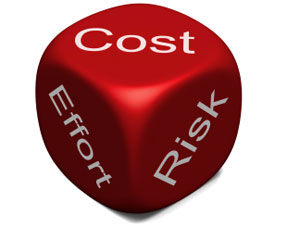It's not in the news nearly as much as it was during the great recession period of 2008-2019, but understanding and measuring a supplier's financial situation and risk remains a key part of the procurement process.
What types of data should procurement professionals analyze to do that kind of detailed analysis? There are several key financial documents that can drive the process, according to James Pearson, an instructor with the Procurement Training Institute who recently wrote on the topic for the Institute for Supply Management's Inside Supply Management magazine.
Supply Chain Digest Says... |
 |
| The audit report should be unqualified. Read the notes to find any issues, such as off balance-sheet liabilities and outstanding legal concerns. |
 |
What do you say? |
| Click here to send us your comments |
 |
| Click here to see reader feedback |
|
|
Start by finding or acquiring the supplier's balance sheet and income statements. That's easy enough for public companies, but make take some effort to acquire them from private firms. They are unlikely to be in the possession of your account manager from the supplier, and will take a request to the supplier's finance department.
You should also try to gather information from other suppliers or industry averages for comparison purposes, Pearson says.
With the balance sheet and income statement, the following analyses can be easily performed:
Profitability: Compare the profitability of the company (net after-tax income divided by net sales revenue). If the supplier is profitable relative to its peers, it is a good indicator that assets are well used, meeting industry norms for performance, Pearson says.
Return on equity (ROE): Divide net after-tax income by net equity. Compare this to the industry average and to the last three years of ROE for the company. ROE is a proxy for how well management is using the resources of the company - the better ROE relative to the industry, the more likely management is performing well, Pearson notes.
Working capital: Working capital is calculated by subtracting current liabilities from current assets. Working capital is an indicator of the ability to make payments on time. If a supplier has positive working capital, it can pay its bills. Generally, a company should have at least three months of working capital to cover its monthly bills.
If the failure of the supplier won't harm your organization's immediate health, Pearson suggests procurement managers should consider using just these three statistics, reviewing them annually. But if a supplier shows signs of declining financial health, reassess the risk level and potentially find another supply partner that is more stable.
However, Pearson says, if a supplier is very important to the company's business operations and its failure would affect current operations, consider looking at the following additional measures:
Free cash flow: Subtract capital expenditures for the year from cash flow from operations for the year. This indicates how much free cash the supplier has for investment and other purposes.
If this is negative, it could limit growth or the supplier's ability to respond to emergencies.
(See More Below)
|
CATEGORY SPONSOR: SOFTEON |
|
|
| |
|
|
Debt-to-equity ratio: Calculated by dividing total liability by owner's equity. This statistic will indicate the supplier's reliance on creditors. If the ratio appears high (for instance, if the ratio is more than 20% higher than the industry average), check on the terms of the debt.

Pearson also recommends discussing with the supplier how it plans to pay its debt over the term of your contract.
Credit agency rating: Check the rating from Moody's or another rating agency. While not a guarantee of health, a credit agency rating is a good indicator of the supplier's ability to raise money as required to respond to customer needs.
Audit findings: When your organization is highly dependent upon a supplier for certain goods and services, it's important to obtain - and read - an audit of the supplier's performance completed by an independent auditor. If the supplier is a private company, you may need to request an audit. If the supplier pushes back, this could be a red flag, and you may need to rethink your supply solution.
The audit report should be unqualified. Read the notes to find any issues, such as off balance-sheet liabilities and outstanding legal concerns.
Interview with the supplier's CFO: If the supplier is critical to your supply chain, Pearson suggests hiring a specialized financial analyst and considering interviewing the supplier's CFO. The more critical the supplier is, the more you need to know about the supplier's health and operating future. Any warning signs don't necessarily mean something's wrong, only that the team should investigate further to determine the nature of the risk. Call upon supply management's business insight to make the final contracting decision, Pearson days.
"Analyzing the right financial data and hiring experts when necessary enables supply management to guide the creation of financial risk insight as a part of assessing the future role of a supplier," Pearson concludes.
Are you surprised by this data on supplier innovation? What are the keys to driving supplier innovation? Let us know your thoughts at the Feedback section below.
Your Comments/Feedback
|